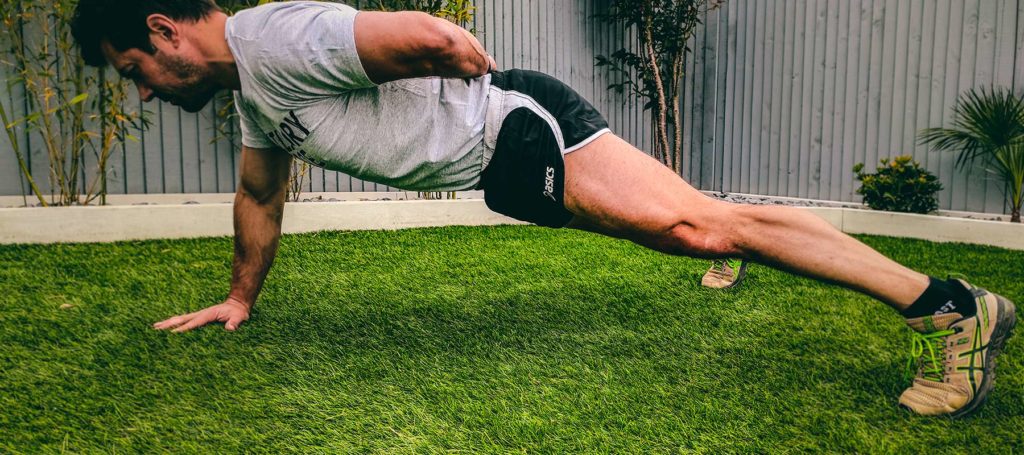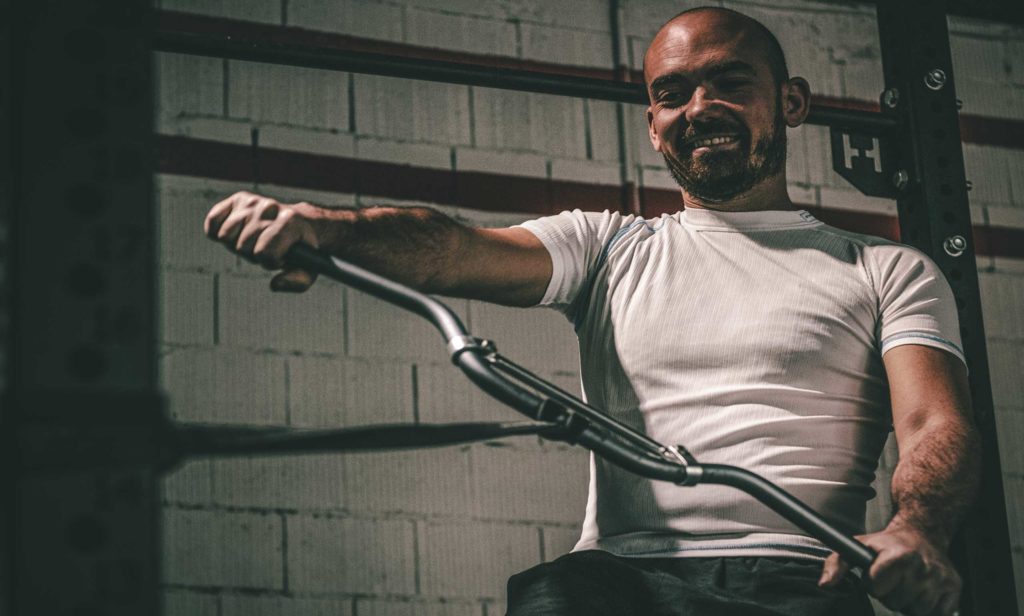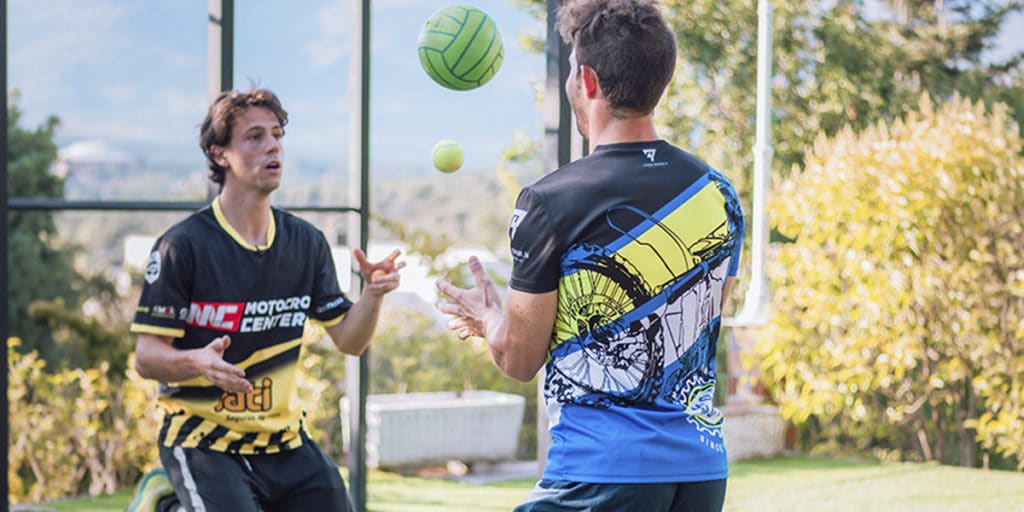Looking for ways to increase your muscular endurance? You are at the right place. We will show you why you need to do resistance training and how you can do it from different physical levels.
In addition, we will go over the most important tips for thinking about a routine step by step, based on our experience as professional trainers.
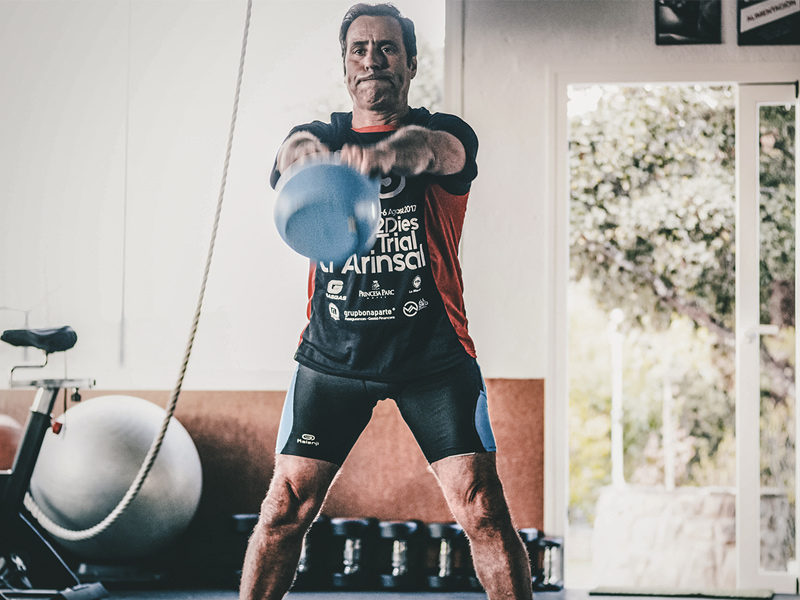
What is muscular endurance?
Before you get into learning how to increase muscular endurance, you first need to know what muscular endurance actually is.
Muscular endurance is the ability of a muscle to handle repeated contractions against any type of resistance for any given period of time.
In simple terms, is the extent to which a muscle can remain active even after repeated exertion of force over an extended period of time.
Muscle resistance is considered to be a long-term measurement of energy. Athletes all around the globe go through specific endurance enhancing exercises to prepare themselves for upcoming challenges and competitions.
Benefits of increased muscle endurance
We believe that muscular endurance is not a capacity that can only be acquired by high performance athletes.
Many sports amateurs can develop it, and you rider are not the exception.
Muscle resistance has many benefits, but from our experience as professional trainers we highlight these:
- Reduces risk of physical Injuries
- Increased overall energy levels
- Better performance when doing physical activities
- Improves your sleeping routine
Enhancing Muscle Endurance
You want to know how to increase muscular endurance? There are no exercises that by themselves will make you gain muscle endurance. But there are exercises that when done in a certain way will give you muscular resistance.
If we involve more muscles we will be working better and in a more functional way. If you choose to do a biceps curl, for example, you will be working that muscle alone.
Now, if you choose a push up you will be involving many more muscles and joints in the work.
If we do it right, an exercise like push-ups will help us work our arms, but at the same time, we will be exercising our core and even our buttocks.
And that, if my objective is to increase my muscular resistance, is very interesting.
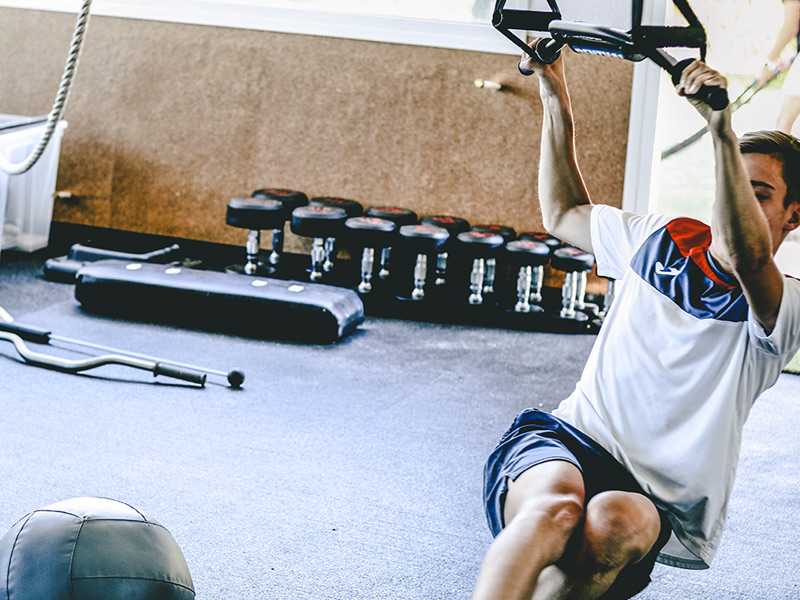
If we want to increase our muscular resistance, we can take two paths and combine them.One is to work at high times, with isometric exercises, each for a good amount of time.
The other is to work on a high amount of repetitions. What would be a high amount of repetitions? That will depend on your fitness and we will see that later.
Key guidelines that can’t be missed
- The weight resistance that you must put on your body can vary as you progress, but it can never be very high because this will not allow you to reach the appropriate amount of repetitions and gain muscular resistance. You will be able to increase your resistance if you add exercise circuits to the long isometric exercises or to the routines with many repetitions.
- If you put between 3 and 5 exercises to do continuously you will gain muscular resistance throughout your body.
- You must work under the right demand and pay attention to your self-perception. It won’t do you any good to do 15 repetitions without resistance if you reach the end without giving it your all.
- If that is the case, then you must raise the repetitions, the load, or both to do a job that really helps you to increase your muscular resistance.
Some exercises that executed in a large number of repetitions or in a long isometric load will help increase your resistance:
- Planks: you know how important the core is. If you practice different types of plank looking for many repetitions or a great time of isometry, you will be much more prepared to activate your core for a long time in the competition.
- Push-ups: With these, you will work on your stamina and strength in a phenomenal way. In addition, you can do it with many variations that will increase the difficulty and for the bases, you don’t need anything else than your body.
- Burpees: An exercise that combines everything you need to increase your resistance and puts your whole body into play at the same time
- Lunges: A tremendously complete leg exercise. It will put your whole lower body to work and in high repetitions, you will feel that it burns if you work at your best. Remember to activate your core and keep your back in line.
- Squats (depending on your level of training you can add weight in high repetitions, for example with Russian weights)
- Rowing in TRX (or with dumbbells). It is an extremely functional traction movement, which will help you on the dirt bike or in many other sports.
- Multi-jump: In this case, you will do it with both feet together, from left to right. This exercise is tremendous because it combines aerobic and anaerobic work, strength, and muscular resistance. As you progress you will be able to do it at a higher speed and it will give you an impressive resistance.
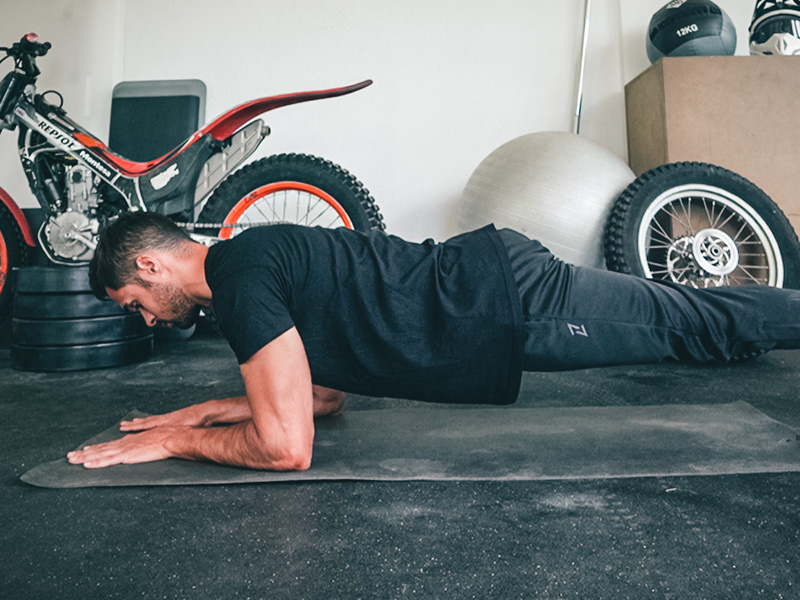
Weights and Loads
- For rookie training level, use light loads for 10 to 15 repetitions
- For advanced training level, you can go for heavier weights. You can go for 10 to 25 repetitions per set
Frequency
- Beginners should train for 2 to 3 days every week. In training sessions, you should work both upper and lower body
- Intermediate level trainees should train for 3 days a week for their entire body. You can use the rest of the days for a specific lower or upper body workout routine, but remember to rest too.
- If you divide your sessions into muscle groups then you can train between 4 and 6 times per week, including double shifts at times.
Repetition pace
You can choose different repetition paces for your specific training routine.
- Use low paces for moderate repetitions (12 to 20) per set
- Use fast paces for larger number of repetitions (15 to 30)
Repetitions to increase muscular endurance
This depends on the end goal that you are after. Beginner-level athletes should go for 15 to 20 repetitions for lighter weights. But that’s when you are just getting started with muscular endurance training.
Once you are comfortable with the repetitions for lighter-weight sets, you can pump up the repetitions in a progressive way.
For intermediate to advanced level trainees, 15 to 25 repetitions are recommended for getting the best results in record time.
Of course you can fully customize all these variants, and our training app has all the features you need to increase your resistance according to your goals and taking care of your body’s health by preventing injuries.
Want to drastically improve how you riding skills?
How to increase muscular endurance for off-road sports
At POWERING OFFROAD we designed a method that takes into account the 8Rider Skills and plan our training with different rider profiles in mind.
We look for the specific and functional, so we work with movements that athletes can find in cross country, enduro, motocross and off road biking.
We talk about push, pull and design plans that are as global as possible.
The more muscles we involve the better, but at the same time, we focus on the weak points as it is usually the core, which goes if you notice when you get to the end of the practice exhausted.
We know that off-road competitions require a very high level of resistance and depending on the discipline you will also require a good dose of strength.
That is why we analyze the loads and progression of each of the people we train, and we combine exercises that allow us to increase our strength with others that allow us to increase our resistance.
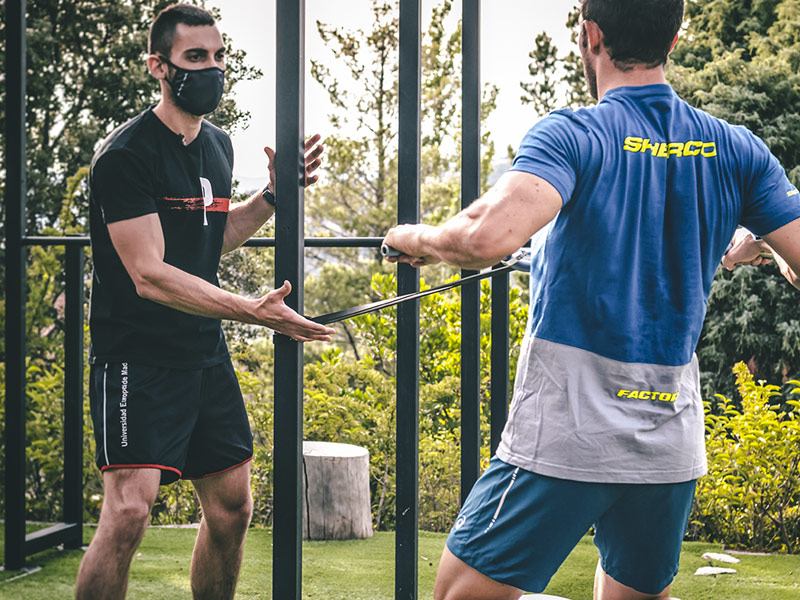
Learn to endure the effort and you will raise your resistance
In addition, during the breaks, we include exercises related to the skills you will be working on the bike, such as coordination and balance.
Why more exercises in the mini-breaks? Because it is fundamental that you learn to work on your skills under fatigue in the training sessions. You are going to need it in the middle of a race.
And never forget, learning to work under fatigue in training and competitions is not the same as overtraining.
We work with the awareness that the results do not come alone or fast and that not respecting the breaks between training will only lead to injuries.
There are no secrets here, if the goal is to progress you must rely on hard work, more so when it comes to endurance.
But you can count on increasing your muscular endurance to totally change your performance as you ride and enjoy any off-road activity.
Strength vs endurance training
Endurance,strength-endurance, and maxl strength training can be combined in different ways.
For riders, all these skills are a mandatory stop at different points of the preparation or even at the stage of the preseason depending on the strategic planning of your calendar, if you are looking for how to increase your muscular endurance.
Unlike strength endurance training, when we aim for maximum strength we move much heavier loads, in sets of less than 5 repetitions and with long rests.
Here we are also going to bet on rests as opportunities to continue training other muscle groups with movements that do not affect the main exercise, nor tire us more.
What are we going for? Back to the weak points. Mobility of shoulders, glutes, balance, coordination, and even the forearms that bring so many problems to riders.
Are you ready for strength training for endurance athletes?
Warm-up: Joint mobility + weaknesses + agility and coordination on stairs.
Day 1
Squat: 5 sets – 2 repetitions
Low front plank
Farmer’s walk – 30 seconds
Single-Leg Balance Back and Forth with Eyes-Closed – 20 seconds each side
Day 2
Bench press
Low side plank – 20 seconds each side
Towel Hanging – 20 seconds
Knees on stability ball scrubs – 30 seconds
Flexibility
At the end of the workout, stretching is absolutely key. It’s not something you can skip “because it’s not that important”.
On the contrary, if you’re running short on time, it’s better to do a little less strength exercise and not skip the flexibility work.
We put our muscles under a lot of stress, whether you are a rider who spends hours on the bike all day or if you have an office job, which, even if it doesn’t seem like it, puts your back to the test.
Strength endurance training and maximum strength training are demanding, and flexibility is your great armor against injury. We recommend practicing yoga exercises, which are totally beneficial for all types of athletes.
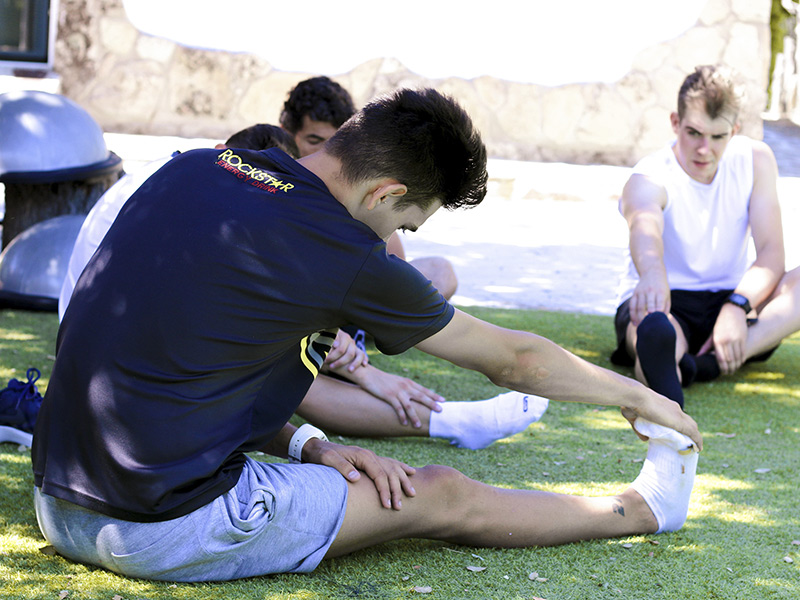
Weight training for strength and endurance: is it the same?
Depending on the type of strength we are training the loads will point towards a high weight with very few repetitions, or a low weight to perform many more.
If we talk about how to increase muscular endurance we already know that we will be above 12 repetitions, but what about maximum strength?
Let’s divide it into levels.
Starter
If you are just starting out we can’t even talk about maximal strength loads, because they are too high loads to start with. Here we simply do not recommend this type of training, and instead it is much better to work on stength endurance.
Intermediate
The loads here have to be around 80 percent of your maximum capacity. This is a matter of perception, your guide will be how you feel, to reach 6 repetitions maximum. You can do from 1 to 3 sets per exercise.
Advanced
Loads here range from 85 percent to 100 percent of your capacity. At maximum you can’t go beyond 6 reps in 3 sets.
You must keep in mind that maximum strength is only worked with core exercises such as:
- Squat
- Deadlift
- Bench Press
- Military Press
We are going to put an asterisk in the military press because as far as riders are concerned, at POWERING we prefer to replace the military press with the landmine press, horizontal rowing, and pull-ups (vertical rowing).
Why do we prefer this? Because riders’ shoulders are a tricky area. They are very affected by the practice on the bike and there is no reason to risk injury, when other exercises can perform exactly the same, even with more functionality.
Frequency
In the intermediate level between 3 and 4 days of strength training is an excellent average.
An advanced level of up to 6 days of strength training can be performed.
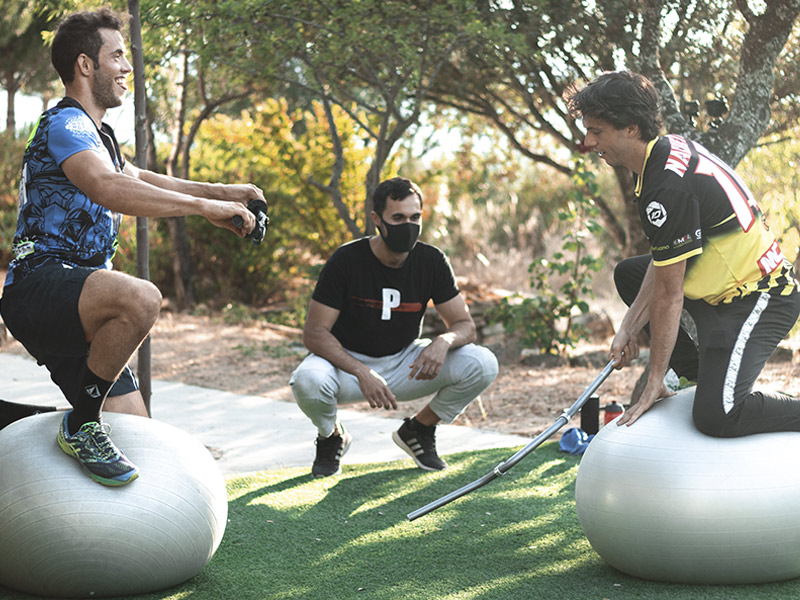
Rest Periods
For all levels, the recommended rest period between one set and the next is between 2 and 5 minutes.
Repetition pace
There are no differences here either. Unlike strength endurance training workouts, in maximal strength, we also have to apply our maximum pace on those high weight loads.


